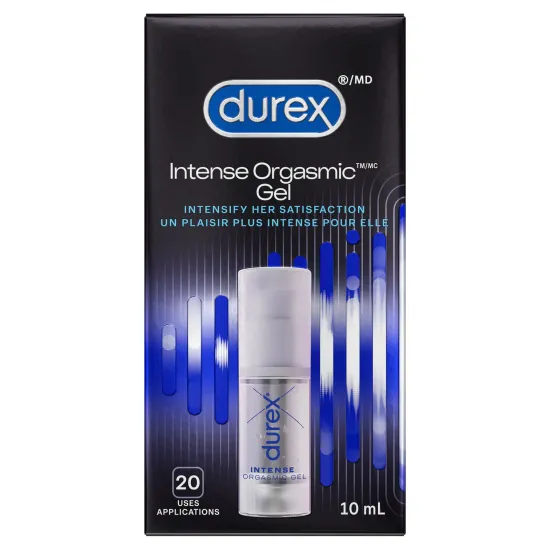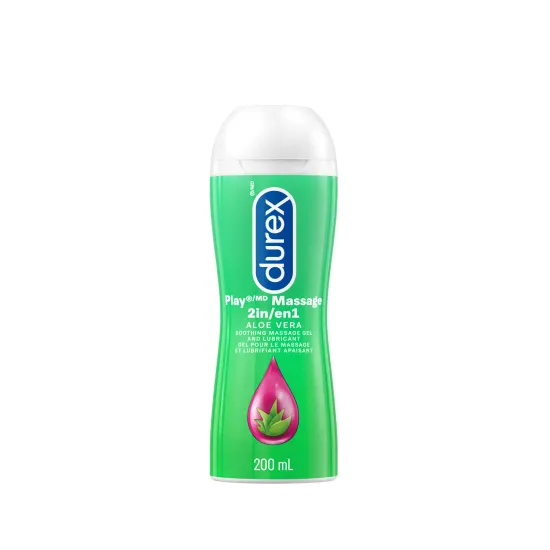
Latex Condom Allergy - What You Need To Know
Experiencing reactions to latex condoms? Or want to find another alternative to practice safe sex using condoms? Find out what a latex condom allergy is, what the symptoms entail, how to prevent a latex allergy rash, and try on our non-latex Durex condom option.
Allergies are extremely common. For some, it may be cats. For others, it may be dust, pollen, grass or, even, negative energy. But another common, maybe lesser known, allergy that people have is with natural rubber latex. In this article, we will discuss symptoms of latex condom allergy, alternatives to latex condoms, and more..
Throwing in some slang here, rubbers are essentially referred to as ‘condoms’. However, not all condoms are made using rubber latex to best fit people with latex condom allergies. Everyone should be entitled to safe and pleasurable sex, without the risks of negative or harmful bodily reactions.
Afterall, nothing feels better than safe sex for all.
Here at Durex, we have our Durex Real Feel non-latex condom* that perfectly meets the needs of people who experience symptoms from latex condom allergies.
We’ll get into more details about this option soon but, first, let’s discuss what causes such an allergy to fully understand the nuances of this health sensitivity.
And if you want more general condom knowledge, let Everything You Need To Know About Condoms be your step-by-step guide to choosing the right ones.
1 What Is a Latex Condom Allergy?
Simply put, it’s an allergic reaction caused by the source of natural rubber latex, found in the sap of rubber trees – also known formally as Hevea brasiliensis (how’s that for a mouth full). Rubber trees replaced the rubber plant in the early 20th century as the main source of natural rubber (how’s that for a funky fact) and are found in the Amazon region.
Used to make natural rubber latex-based products, rubber trees are the bees knees – but not for people who develop allergic reactions to them. Not to be mistaken for synthetic rubber made from chemicals, like house paints, natural latex allergies are another ballgame.
But when we talk about a condom allergy, we really mean a natural rubber latex allergy. And we have the solution for this.
Let’s touch on the symptoms of latex condom allergies, which products contain natural rubber latex, any prevention methods, and a suitable condom option that works for people who experience this specific allergic reaction.
2 What Are the Symptoms?
While latex condom allergy symptoms can vary, there are a few that arise across the board. Swelling and itching are quite common but, if the latex enters the system, there are more severe reactions that can occur such as:
- Swelling of the throat
- Trouble with breathing
- Profusely sneezing
- Breaking out in hives
- Itchy and watery eyes
- And most severely, anaphylaxis – a life-threatening allergic reaction
If you or someone you’re with experience the above symptoms shortly after using a latex-based product, seek help and call emergency services.
3 Who’s Most Likely to Develop a Latex Allergy?
Anyone can, as allergies know no limits (just like kinky sex). That being said, these classifications of people are at higher risks for developing these hypersensitivities from a reaction to latex:
- People who frequently wear latex gloves, such as healthcare workers
- Children with spina bifida (a birth defect that happens when the spine and spinal cord don’t form the way they should)
- People who have had multiple surgeries
- People who are more exposed to natural rubber latex, such as factory workers
- People with other allergies, like hay fever or multiple food sensitivities
With all these points in mind, which other products in particular can affect these groups? Let’s discuss.
4 Which Products Contain Latex Other Than Condoms?
While we continue to speak outside of the world of condoms, people who have latex allergies should be aware of these latex-based products (that can be used during sexy playtime) and look to other alternatives:
- Disposable gloves (for role-play sessions)
- Footwear (such as latex fetishwear)
- Balloons (for sex celebrations)
- Waistbands found in underwear
- Rubber toys
And remember, if you or someone you’re with suffer from allergic reactions caused by latex, continue to shop around to find the right fit.
Speaking of fit, switch gears a bit and check out Find Your Fit: The Best Condom Styles Explained for more clarity on condom choice, and seek pleasure in the variety we offer.
5 How To Prevent a Latex Allergy Flare Up
If you’re diagnosed with a latex allergy through an allergy blood test, then it’s best practice to avoid any direct contact with the products mentioned above. During dental, medical, or surgical visits, it’s in your best interest to warn health care providers of the latex allergy before any treatment takes place.
The absolute best solution for an allergy to this material is by avoiding it at all costs. Now, this doesn’t mean running for your life like it’s a crazy ex if you happen to stumble across it – it just means being aware if it’s in your presence IF you’re diagnosed with the allergy.
But say you’re already in the act, exposing your body to a latex condom… What do you do now? We recommend stopping immediately and removing the condom – further reducing the time of exposure. We know it sucks having to quit sex mid-session but what’s worse – a body break or a body breakdown?
In cases of a severe allergy to rubber latex, you should don a medical alert identity and carry an epinephrine auto-injector for emergencies.
6 What’s The Best Condom to Use For a Latex Allergy?
And now, the moment most of us have probably been waiting for this entire article: the BIG reveal! What’s the best condom alternative to the classic latex options? And how can you ensure you’re safe while still catching those pleasure feelings? We have the answer, wrapped in a gold package.
Durex Real Feel condoms* are latex-free and made of polyisoprene material. It’s a great alternative for those with latex condom allergy. Instead of natural rubber, they’re designed with technologically advanced material to bring you that same level protection against STDs and pregnancy as latex condoms.
One of the top selling points to these condoms is that they offer a natural, skin-on-skin feeling that allows you to feel that much closer to your partner(s). Through a combination of intimacy, sensitivity, and connectivity, Durex Real Feel* condoms help maximize pleasure while meeting the needs of those with latex allergies.
And, like all Durex condoms, they’re 100% electronically tested with 5 more quality tests carried out on every batch to ensure great quality*.
Know what pairs nicely with Real Feel condoms? One of our Durex water-based lubes. They’re light, smooth, and go together with polyisoprene condoms. Plus, they won’t stain the sheets!
Want the scoop on condom sizes? Click Better Fit = Better Feel - What Condom Size Should You Buy? for an in-depth guide on finding the perfect fit.
–
7 Wrapping Up
To wrap this up (quite literally), you should never let an allergy to latex condoms stop you from being protected in your pleasure during sex. Knowing the symptoms of a latex allergy is one thing, but choosing not to wear a condom because of this is just plain ridiculous. In fact, we’re allergic to people who believe that logic works!
Now that you know all about staying protected, keep on making smart choices and enjoy your respectful and pleasurable decisions. Nothing feels better than that.
*Ensure this product is right for you. Always read and follow the label before use. WARNING: Although these condoms do not contain natural rubber latex proteins, some who are sensitive to natural rubber latex condoms may nevertheless have a sensitivity to certain components in these condoms. If irritation or discomfort occurs, discontinue use and consult your physician.

